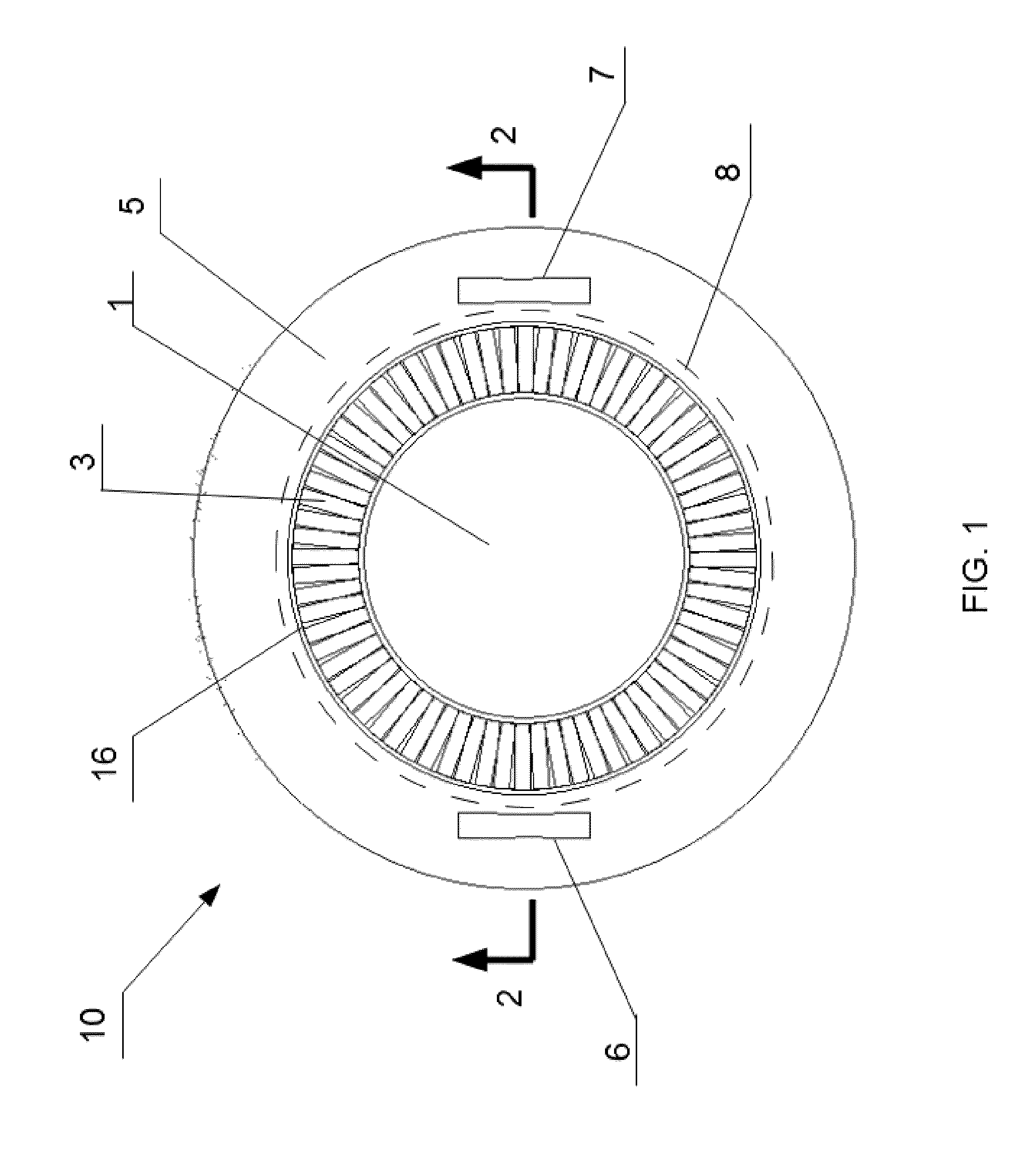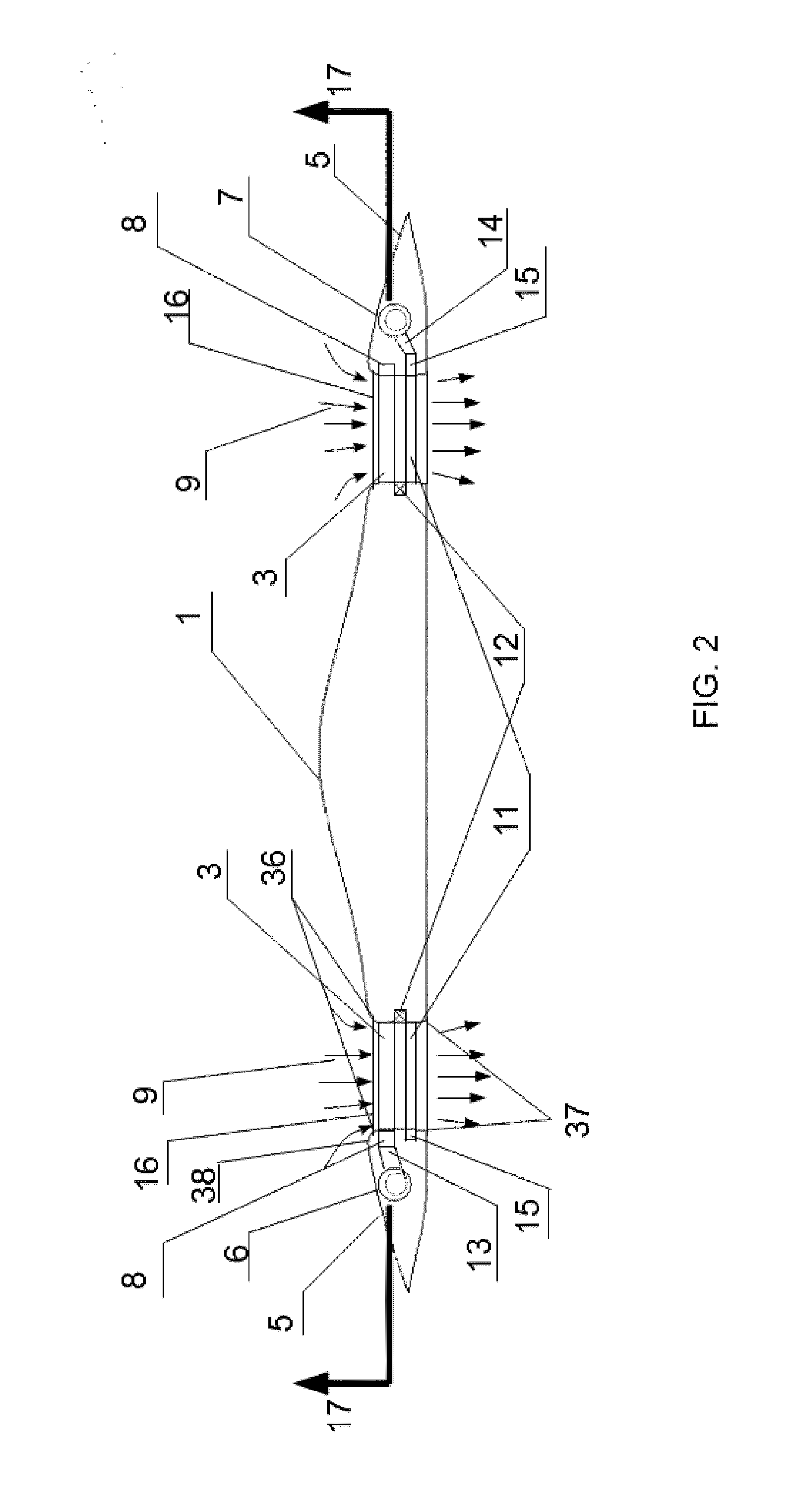Annular ducted lift fan VTOL aircraft
a technology of ducted lift and vtol aircraft, which is applied in the direction of aircraft, vertical landing/take-off aircraft, rotorcraft, etc., can solve the problems of large aerodynamic drag, relative slow forward speed, and limited forward speed of helicopters less than 200 knots, and achieve high efficiency
- Summary
- Abstract
- Description
- Claims
- Application Information
AI Technical Summary
Benefits of technology
Problems solved by technology
Method used
Image
Examples
Embodiment Construction
[0026]The invention relates to aircraft with annular ducted lift fan system capable of efficient vertical takeoff and landing and horizontal flight. Referring now to the figures, and more particularly to FIG. 1, aircraft according to a first embodiment of the present invention is designated in its entirely by reference number 10. The aircraft 10 has a central fuselage 1, an annular duct 16 in which a lift fan set 3 is mounted, a peripheral wing 5, and two turbofan engines 6, 7. For gas-driven mode, a rectangular-shaped gas chamber 8 is also shown. The annular duct is completely opened with the shutters or aperture and louvers removed. Although the aircraft 10 may have other sizes without departing from the scope of the present invention, in one embodiment the aircraft has a peripheral wing diameter 20 meters, annular duct diameters 10 and 14 meters, fan blade length 2 meters, and depth of duct 1 meter, in order to compare with the rotor diameter 14.64 meters and blade length 7.32 me...
PUM
 Login to View More
Login to View More Abstract
Description
Claims
Application Information
 Login to View More
Login to View More - R&D
- Intellectual Property
- Life Sciences
- Materials
- Tech Scout
- Unparalleled Data Quality
- Higher Quality Content
- 60% Fewer Hallucinations
Browse by: Latest US Patents, China's latest patents, Technical Efficacy Thesaurus, Application Domain, Technology Topic, Popular Technical Reports.
© 2025 PatSnap. All rights reserved.Legal|Privacy policy|Modern Slavery Act Transparency Statement|Sitemap|About US| Contact US: help@patsnap.com



